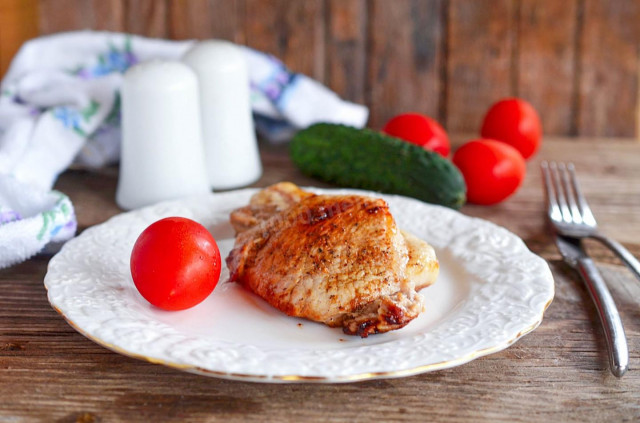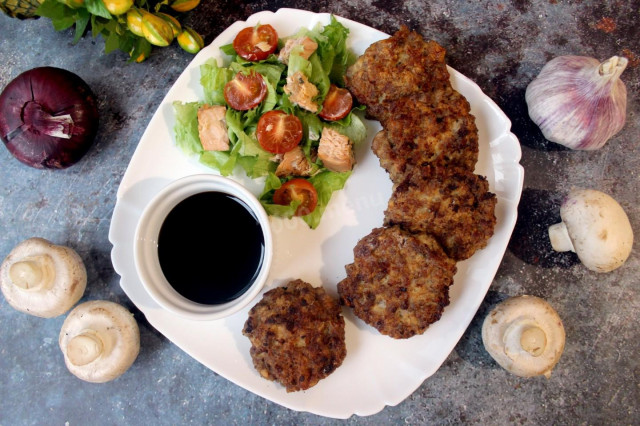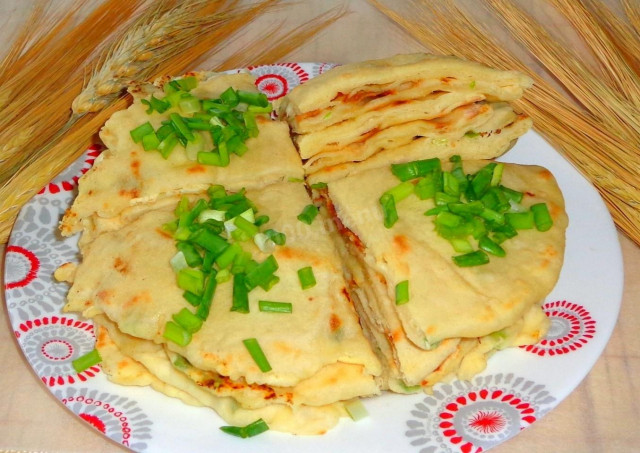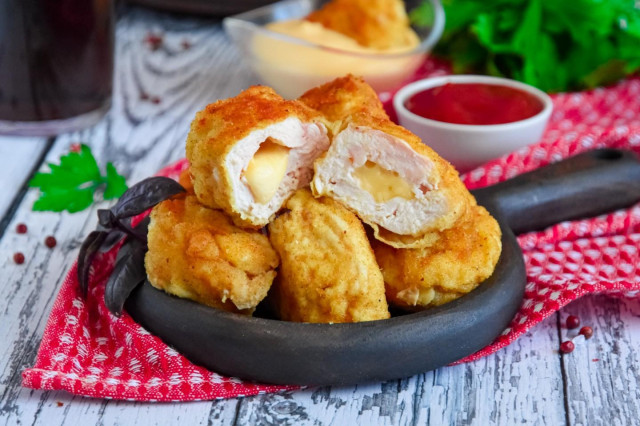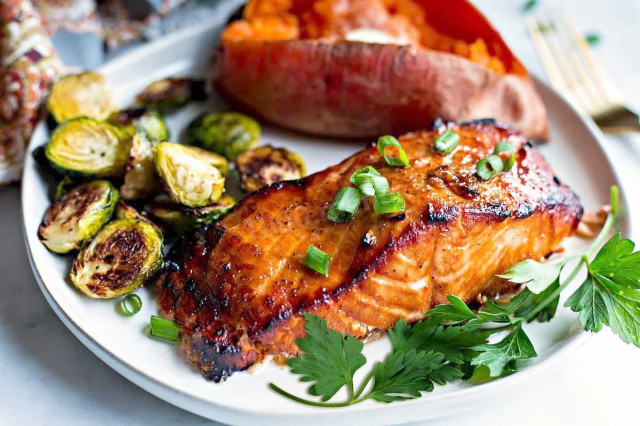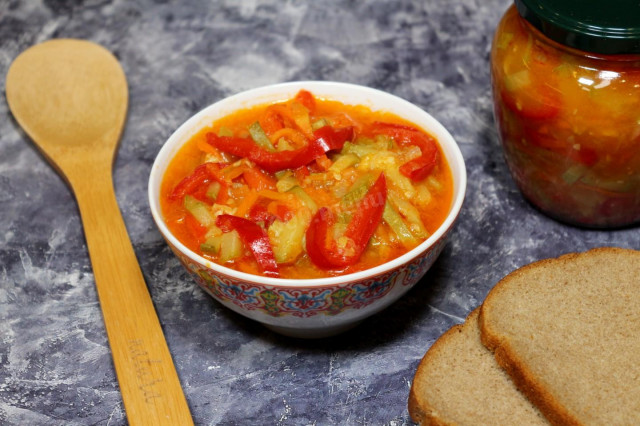Composition / ingredients
Step-by-step cooking
Step 1:
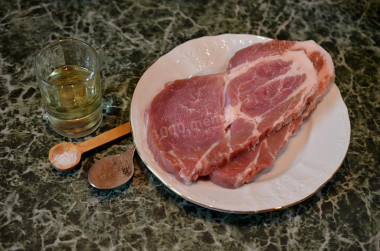
How to fry a pork steak? Prepare the products. For this recipe, it is better to take not frozen, but fresh meat, otherwise the finished meat risks getting dry. Which part of the pork you take depends on what kind of meat you prefer. If you like pork fatter, then take pork brisket, if you like meat with small veins of fat — a neck will do, if you prefer leaner meat — a ham or loin will do.
Step 2:
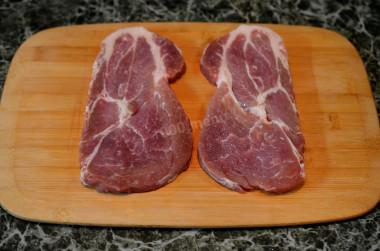
Wash the meat, dry it with paper napkins. We will fry it in a frying pan with oil, so if even a drop of moisture gets into the pan, there will be a lot of splashes. So really dry it well. Cut into steaks about 1 cm thick. Do not make steaks too thick — they may not be fried, but thin ones will not work either — they will be too dry.
Step 3:
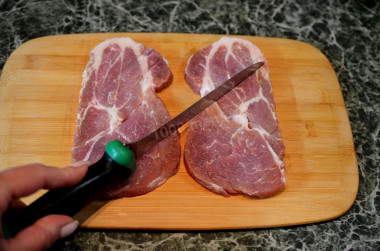
Lightly beat off the meat with a special hammer or the blunt side of a knife. Previously, it is better to cover the meat with food wrap and already beat the meat on it. This way you will avoid a lot of splashing when batting.
Step 4:
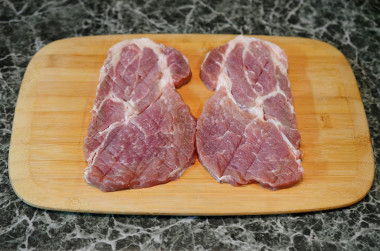
This is what we get meat after beating with a knife.
Step 5:
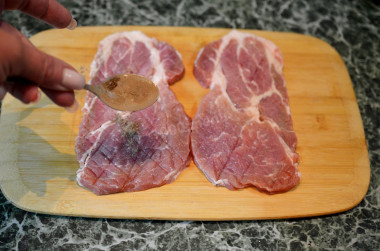
Pepper the pieces of meat. I use a mixture of peppers, but it is quite possible to take some one: black or red pepper. You can also add some of your favorite seasonings: garlic powder, hops-suneli or something else.
Step 6:
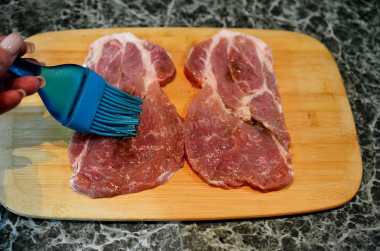
Grease the meat on both sides with a tablespoon of vegetable oil.
Step 7:
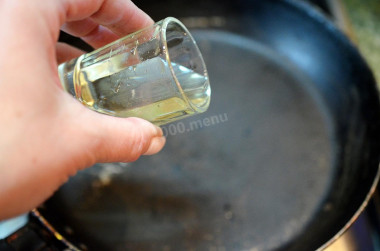
Heat the remaining oil in a frying pan. For frying, you can take any vegetable oil from ordinary sunflower to expensive olive oil, but the oil must be refined so that when frying it does not burn in a frying pan.
Step 8:
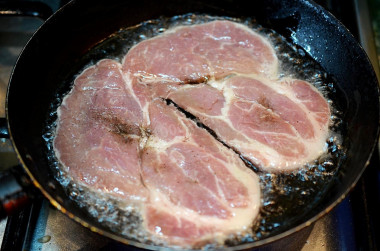
Put the meat in a well-heated oil and fry on a sufficiently high heat for about 7 minutes. It is necessary that a crust is formed on the meat, which will seal the meat juice inside.
Step 9:
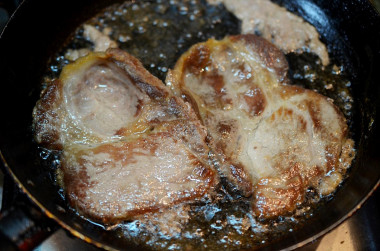
Then carefully turn the meat over and fry on the other side for another 5-7 minutes.
Step 10:
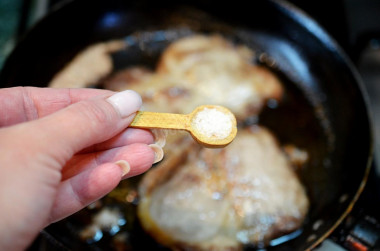
At the very end, salt the meat. Do it exactly at the end — the salt makes the meat juice and can become dry.
Step 11:
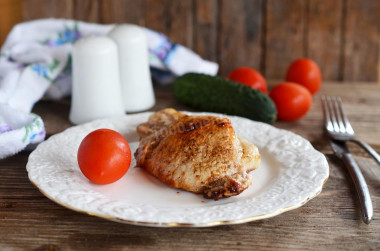
Serve the steak hot immediately after cooking. Bon appetit!
In addition to pork, any other meat can be used in this dish. Keep in mind that the cooking time, as well as the taste and calorie content of the dish will change. For example, beef is cooked longer than pork, and chicken fillet or turkey is less.
Any oils are useful only until a certain temperature is reached - the point of smoking, at which the oil begins to burn and toxic substances, including carcinogens, are formed in it. How to determine the roasting temperature and choose the best oil for frying, and which is better not to use at all, read here .
Important! An incorrectly selected frying pan can ruin even the best recipe. All the details on how to choose the perfect frying pan for different dishes read here .
Caloric content of the products possible in the composition of the dish
- Pork fat - 333 kcal/100g
- Pork meat - 357 kcal/100g
- Pork - low-fat roast - 184 kcal/100g
- Pork chop on a bone - 537 kcal/100g
- Pork - schnitzel - 352 kcal/100g
- Pork shoulder - 593 kcal/100g
- Boar's leg - 113 kcal/100g
- Pork - 259 kcal/100g
- Vegetable oil - 873 kcal/100g
- Salt - 0 kcal/100g
- Ground hot pepper - 21 kcal/100g

